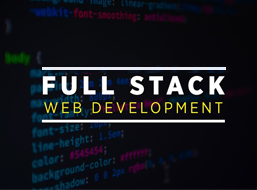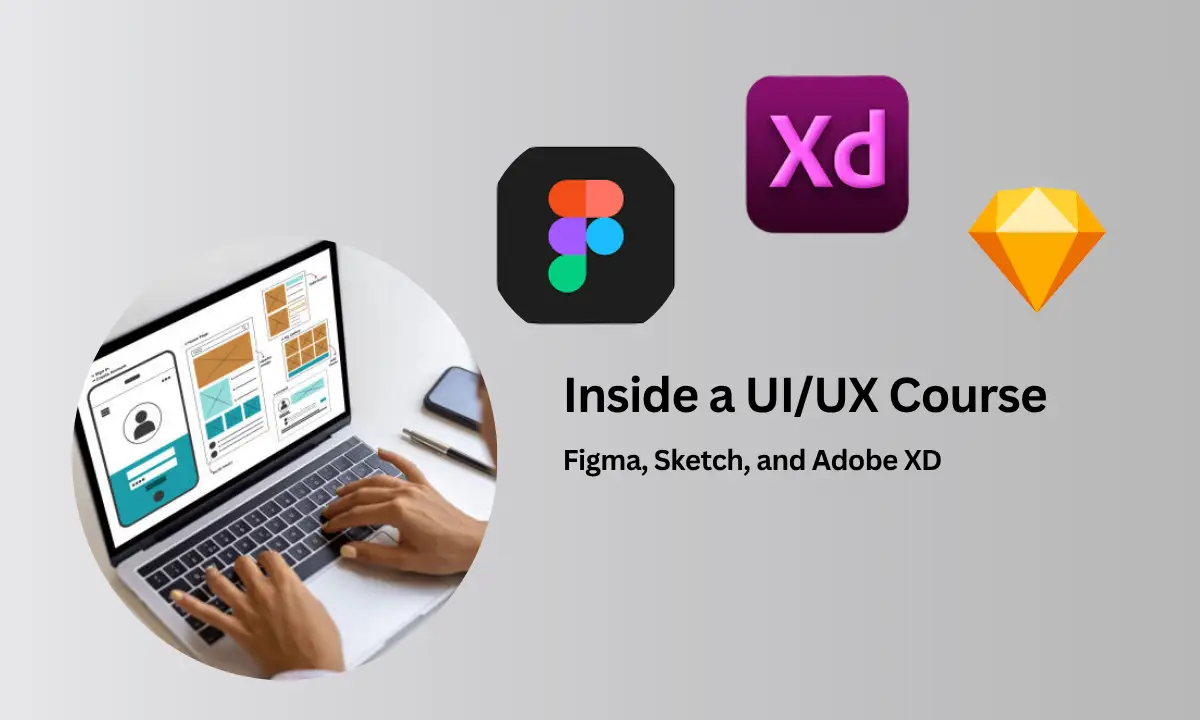Table of contents
|
1. Why Figma, Sketch, or Adobe XD? |
|
2. Knowing the principles of UI/UX design |
|
3. Introduction to Interactive Design Tool |
|
4. The art of Prototyping and Wireframing |
|
5. Having Hands-on UI/UX Projects |
|
6. Iteration, Collaboration and Feedback |
|
7. Career Navigation in UI/UX Design |
|
8. Why a User Interface Design Course Matters |
|
9. Mapping out your Career with UI/UX design training |
|
10. Conclusion, and what to do Next |
Why Figma, Sketch, or Adobe XD?
The dynamic and competitive environment we live in today requires knowledge of UI/UX design to construct interfaces that delight the application user and encourage interaction. Regardless of whether you are developing intelligent mobile interfaces, responsive web pages, or sophisticated dashboards, the trick here is to get your hands on the right pieces of software. In recent years, Figma, Sketch, and Adobe XD have become the most popular software in this sphere; this module offers some explanation of this trend by examining the particularities of these programs, their pricing model, and their community.
The analyses of the collaboration processes workflow, ecosystem of the plugins, and behavior in various operating systems provide you with an idea of which of the platforms is closer in both style and requirements to you and the project. Ultimately, you get a clear guide to the process of addressing design problems and making your creative process easier.
Knowing the principles of UI/UX design
Such an adequate curriculum begins with the fundamentals, typography, color theory, spacing, and visual hierarchy. You investigate user perception of information, learn Gestalt principles, and establish consistent design systems. Another article on user research will be about approaches like surveys, interviews, and making a persona to cement your choice with real-life evidence.
Wireframing labs will start using low fidelity sketches that focus on content, flows, and not on beauty. Later on, you discover how to develop these sketches into mid- and high-fidelity mockups, taking into account grid system and style guides. Learning these ideas soon helps you build an excellent base of all future UI/UX design work and guarantees that your interfaces become understandable.
Introduction to Interactive Design Tool
Real Projects Practices
One of the best moments in a program is devoted time with engaging design tools. At this step, you will be able to use the Figma-designed collaborative canvas, the accurate and powerful editing of vectors available in Sketch, and the vast and powerful libraries available in Adobe XD. Labs and group workshops are step-by-step and focus on teaching you how to create clickable prototypes, working with auto-layout constraints, and how to add popular asset management and version control plugins.
Trainers demonstrate design tokens, shared libraries, and branching to work with the team. The main idea of the mini-projects, such as a redesign of a login page or development of an onboarding flow, is to learn shortcuts and best practices in a tool. It is a practical method that makes you produce professional output and organize your work to greater efficiency.
The art of Prototyping and Wireframing
Further courses delve into Prototyping tools for designers. You will learn about the voice triggers and gamepad interactions of Adobe XD, the smart animate transitions, and Sketch with the Craft plugin of data-driven layouts. The exercises simulate real-world client requests: construct the prototype of a multi-screen mobile app with tap, swipe, and hover states; implement micro-interactions; and export assets so that the client can hand off to the developer.
The step-by-step demos teach you guidelines of motion design (including easing curves, timing sequences, and creating pertinent feedback). Usability testing sessions with peer reviews will assist you in formulating useful insights, testing prototypes, and formulating findings. This sink-or-swim experience will allow you to deploy rapid prototypes and iterate effectively to fill the void between ideas and implementation.
Having Hands-on UI/UX Projects
Creation of an Impressive Portfolio
Only theory can take you so far. This is why you are to complete a variety of Hands-on UI/UX projects to reflect professional cases. The projects involved redesigning e-commerce catalogs and booking flows, building data dashboards and landing pages of ready-made hypothetical startups. The short is modelled after an agile sprint: discovery, wireframing, high-fidelity UI, test prototype, and presentation.
You also get to know how to make up design documentations, describe a decision in the form of style guidelines, as well as hand off development assets. The mentors also offer advice on these cycles on graphic design, integration of illustration, and accessibility standards of web graphics, i.e., the use of color contrast and keyboard navigation. After the course, you leave with a portfolio of case studies that demonstrates your ways of solving a problem, design thinking, and capacity to provide solutions that are ready to be provided to the client.
The Design of Reality. In the real world, the designer of a building faces the problem of programming the building as an entity, taking into account the different types of work that are being done in its construction. The designer can simulate that situation with a building which is to be designed in the real world, i.e., program it as an entity, considering the various types of work to be done in building.
Iteration, Collaboration and Feedback
Paired and group projects are common classroom exercises to simulate the work environment. Here, you apply the cross-functional abilities in the tasks, and you are both a designer and a stakeholder. You review the works of your colleagues, suggest improvements to their usability, and get to practice presenting solutions within a time limit. These types of activities focus on communication, feedback loops, and conflict monitoring--which are some of the factors that make a Career in UI/UX design sustainable.
Remote brainstorming practice using such tools as Miro and design handoff using Zeplin reproduces actual production conditions. Your team will be testing layouts during these challenges by creating Prototyping tools that allow the designers to test arrangements and revise interactions faster. With best practices on versioning and file organization, you can be sure about maintaining and scaling your design artifacts with regard to working in teams.
Career Navigation in UI/UX Design
Plans on How to Succeed after Graduating
Entering a Career in UI/UX design is not all about being a technical expert. Personal branding, resume structure and design-specific interview best practices have their dedicated modules. You also get to know how to create an appealing case study, use LinkedIn, and explore effective networking during industry meet-ups. The former employees of the biggest tech corporations offer insights on new trends, design leadership, and in-house/agency career options.
Voluntary seminars take you through elements of freelancing, negotiating with clients, and developing a niche focus. Understanding the role expectations can help target the job roles that are close to you across the spectrum of various jobs that exist, with specific roles like UX researcher, interaction designer, and product designer. Through rich alumni networks and career services, you receive job referrals, get mock interviews, and remain mentored throughout your sojourn, and remain less lonely.
Why a User Interface Design Course Matters
Long-Term Labs of Structured Learning
An in-depth User interface design course offers a guided experience in which best practices are not only described but also affirmed by constant repetition and feedback. A guided program, on contrary to self-study, speeds up the learning process, pointing out typical traps and providing hand-selected materials. You acquire the latest tutorials in tools, repositories of UI packs, and inside advice on new design trends. Coursework may involve assessment of live projects with the partner companies so you get a glimpse of the real deadlines and customer and stakeholder input. When studying offerings, this is why the User interface design course that has flexible schedules, community support, and hands-on mentorship emerges as a course that is relevant and brings value to the real world.
Mapping out your Career with UI/UX design training
Choosing the Right Program for You
In the case of residents of India, a UI/UX design course in Bangalore will lead to one of the most important technological centres in the country. Bangalore has an active startup culture, companies with established products, and international design consultancies. Institutions that provide placement guarantees and offer their students live client projects with guidance from working professionals should be considered when choosing a course. Check alumni success rate, partnership with industries, and schedule options. Weekend, weekday, and part-time batches serve working professionals who want to change careers. Programs are frequently available through financial aid, EMI plans, and early-bird savings.
Conclusion, and what to do Next
A complete course in UI/UX covers everything, starting with the foundations of design and ending in more advanced prototyping, and includes Hands-on UI/UX initiatives along with exposure to the Interactive design toolsets. You learn how to master Prototyping tools for designers, create a professional portfolio, and know the ways to start a Career in UI/UX design. Even though you opt to take an intensively proficient global online boot camp or its more narrow User interface design course closer to your lair, formal learning environment promotes your advancement faster. When you are in India, picking a renowned UI/UX design course in Bangalore and joining an active tech community can be a good idea.
Learn more about Apponix as the best UI/UX designing course in Bangalore, and you will have a bright design career. Enroll today, grab your seat!





